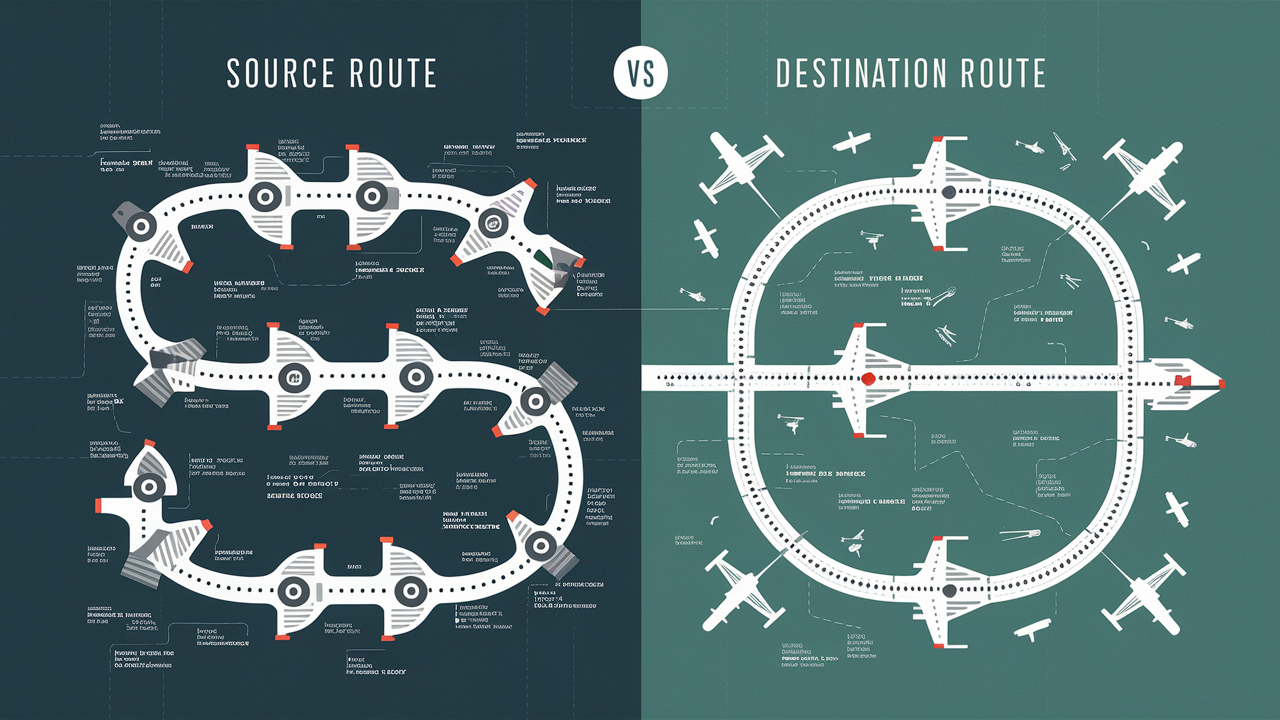What is source route vs destination route?

Source routing is a method in which a router selects routes based on source information, while destination routing is a method in which a router selects routes based on destination information.
In computer networking, there are two broad categories of routing, namely source routing and destination routing, and these refer to how a packet is routed in a network from the source to the desired destination. This boils down to the choice of these two, where one has certain impacts on the control, security, and performance of the network. That is why for network engineers, the difference between latency and delay is paramount to know.
Source Routing
Source routing is also known as pathcontrolled routing, and here, the complete route of the packet has to be defined by the sender of the packet. The destination path is clearly defined with the packet's header.
Here the path of transmission is determined in advance, and each packet contains the complete path through the network. This path includes all the other routers that the packet passed through before getting to the final receiving router. The primary benefit of source routing is that the sender has total knowledge of where the packet is traveling.
The source routing mechanism enables the sender to specify the path that a packet of data should follow in the network. Above each position on the path in the packet header, the next location is defined immediately. Just like the transmission of the packet from the source host to the destination, each router of the path merely relays the packet to the next router in the route. This goes on until the intended destination is achieved.
Destination Routing
In destination routing, also called hop-by-hop routing, each router in the route determines the next hop for the arriving packet. They will make their routing decisions based on a routing table that is stored within their memory to reach the destination address that is contained in the header of each packet.
In destination routing, there is no need for the sender to need the routing information, which is embedded in the header of the packet. Throughout the journey of the packet from the source router to the destination router, all the routers in between carry out a lookup on their routing tables. From the header information of the packet, the router identifies the next hop router address and sends the packet to it. This next router does the same thing till the packet gets to its final destination or the intended recipient.
The biggest strength of destination routing is that the routers are capable of selecting the potential route from the various routes due to the current network status. This makes the network more malleable and robust.
Key Differences
There are several key differences between source routing and destination routing:
- Control over packet path: Source routing means the sender gets to determine the path that the packet needs to follow. In destination routing, routers select the route, which means each router on the way determines the next one.
- Adaptability: In this respect, destination routing can be drastically altered based on the network conditions through the use of routing tables at each hop. That is, source routing has a prespecified route or path that is fixed.
- State information: In the destination routing, each router must maintain the state information to decide which hop is best. This routing scheme does not compel intermediate routers to hold routing state information.
- Signaling overhead: With destination routing, routers may have to use routing updates to convey state information. It is also important to note that in the case of source routing, there is no signaling overhead.
- Security: By their nature, source routes are far more susceptible to manipulation of malicious or suboptimal paths. Destination routing is more secure since routers are the ones that select the most trusted routes.
- Optimality: Destination routing is known to select more quality routes about the current status of the network. The static source route may not be the best in terms of performance.
Concisely, source routing is much more precise in providing control over the route to be taken, while destination routing is much more open to change in the case of network changes.
Use Cases
There are certain situations where one method is preferred over the other:
Source routing use cases:
- Troubleshooting: The main function of source routing is that it enables an administrator to test out different network paths and their associated latency.
- Traffic engineering: With the help of an explicit source route, normal routing could be preempted to suit the network and produce a more balanced load.
- Restricted networks In many situations, there are restricted source routes, and the selection process for routing is made easy when used in spacecraft networks.
- Destination routing use cases:
- Public networks: Destination routing is usually incorporated on public and especially the internet, where dynamic routing adaptation is done.
- Resiliency: Routing to destination helps the state sharing and rerouting make mesh networks more resilient.
- Of special importance when selecting the paths are Quality of Service (QoS) requirements like bandwidth and latency, which destination routing optimizes.
Hence, in conclusion, source routing offers the sender a means of directing the data packets, while destination routing offers the flexibility of the network changing dynamically. It is important to understand that getting the right balance in each of the parameters depends on the kind of network that is being operated.
Call us at +1 833-902-2090 to secure the best deals on flight tickets today. Don't miss out on unbeatable prices for your next adventure!
